Types of removable dentures
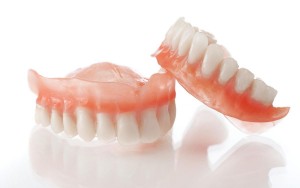
Today, dental prosthetics is one of the most popular dental services, which is aimed at restoring the functioning and aesthetics of the dentition.
There are various types of removable dentures, which makes it possible to choose the most suitable model for the patient.
Removable dentures are dental structures that the patient can put on and take off on their own.
They allow not only to restore the functionality of the dentition, but also to correct cosmetic defects of the teeth in cases where prosthetics with fixed structures are impossible.
Removable type constructions are used for partial or full adentia.
Classification of removable dentures
Removable structures are a plastic plate to which artificial teeth are attached. Such prostheses distribute the load when chewing on the gums. Attached to the oral cavity by suction or using special mounts.
Modern removable structures are characterized by comfort, high durability and aesthetics. They are safe to use and have no age restrictions. They are made taking into account the individual characteristics of the jaw system of the patient.
All removable dentures can be divided into two large groups: full removable and partially removable dental structures.
- Complete removable structures include models made of acrylic plastic and nylon.
- A partially removable denture is made of acrylic or nylon, but metal elements (hooks, locks, arch of the arch prosthesis) can be included in the structure.
Full removable dentures
Designs are used in the complete absence of teeth on the jaw.
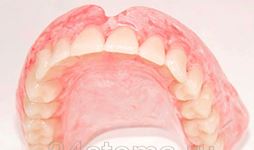
- Dentures are made of nylon or plastic.
- If the design is intended for use on the upper jaw, then it is a plate covering the palate and jaw.
- The prosthesis is fixed in the oral cavity by suction.
- If the plate is attached to the lower jaw, its fixation leaves much to be desired.
- Teeth that attach to the base of the structure are usually made of plastic or ceramic.
- Caring for full removable structures is easy.
However, this type of prosthesis has a number of disadvantages:
- Instability of fixation of the structure in the oral cavity.
- Long term getting used to the prosthesis.
- Short prosthesis life.
- The presence of discomfort when using the product: during meals, talking, etc.
- Violation of diction.
- In some cases, the presence of pain as a result of friction of the structure.
- The need for restrictions on the intake of products.
- Increased hygiene requirements.
- The need for regular examinations.
Partially removable structures
- Partially removable prosthetics are performed when the patient has at least one or several teeth on the jaw. These teeth will serve as a support for the removable denture.
- Partially removable views of the structure are used in the absence of one or more teeth in the oral cavity, and also, as a temporary prosthesis for the duration of permanent manufacture. The use of the design is most relevant for the loss of teeth of the chewing group.
A partially removable denture is made of nylon or plastic.
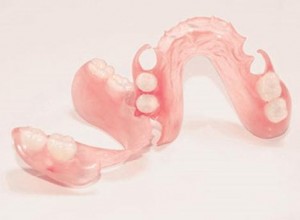
- Fixation of structures in the oral cavity occurs due to clasps, with which the prosthesis is attached to the teeth.
- In the case of using a nylon model, the clasps are made of the same material as the structure itself.
- If the prosthesis is made of plastic, then the hooks are made of metal.
- Partially removable design is easy to manufacture, lightweight and able to easily transform.
Video: “Removable prosthesis”
Varieties of partially removable dentures
The following partially removable structures are available:
- Lamellar.
- Clasp.
- Immediate prostheses.
- Removable sectors or segments of the dentition.
Clasp prosthesis
Refers to a group of partially removable structures.
This is one of the most durable and durable structures, which has many advantages:
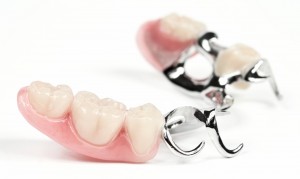
- Uniform distribution of the chewing load on the bone tissue of the jaw, thanks to the metal frame.
- As a result, the wear of the teeth preserved in the oral cavity is reduced and there is no friction of the structure against the gums.
- Designs do not have to be removed before bedtime.
- One of the advantages of non-metal clasp structures is the presence of elastic clasps, due to which the prosthesis is securely held in the mouth.
One of the significant disadvantages of clasp products is the high cost of the prosthesis.
Plate prosthesis
Designs are used in the presence of a defect in the dentition in the absence of several teeth in a row, as well as with the loss of a chewing group of teeth.
This method of prosthetics is the simplest and most affordable.
Sectors and segments
A removable sector or segment of the dentition is a one-sided prosthesis, which is indicated in the absence of chewing teeth on one side of the jaw.
Immediate prosthesis
It is used as a temporary design for dental indications.
Types of removable dentures
Removable structures vary in the material from which they are made.
Plastic
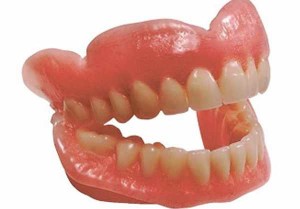
- Designs are made of acrylic.
- Removable acrylic dentures can be used both with a partial absence of teeth, and with a complete edentulous.
- If the teeth are completely absent, then the design rests on the gum, its fixation occurs due to the "closing valve" or suction action.
- With a properly made prosthesis, during putting it on, a discharged space is created between the structure and the mucosa, due to which the prosthesis is held. Such designs are called "suction cup prostheses."
- In case of partial absence of teeth, a construction is used, the hooks of the wire extend from the plastic base of which. They cover abutment teeth. As a result, the structure is firmly fixed in the mouth.
- If it is necessary to restore one or two teeth in a row, then a butterfly prosthesis can be used. It is relevant to use this design to restore distant chewing teeth. The design can be used constantly, it is invisible to others.
- The service life of acrylic prostheses is from three to four years and can be adjusted, depending on the rate of atrophic changes in the jaw bone.When the bone is in good condition, the duration of use of the structure can be 5 years.
Clasp denture
Unlike other designs for removable prosthetics, the clasp prosthesis is based on a metal frame. Thanks to its presence, it was possible to reduce the size of the plastic base, which made the design less massive.
There are two ways to fix the prosthesis in the oral cavity:
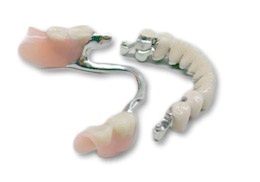
- Using the clasp system. Such designs have reliability and comfort, but have an aesthetic disadvantage. When metal clasps get into the smile zone, they become noticeable to others.
- With the use of locks (attachments). Crowns are fixed on the abutment teeth, and elements of micro-locks are attached to them and the body of the removable structure. When the prosthesis is fixed, parts of the micro-locks snap into place and the structure is firmly held in the oral cavity. Clasp constructions on lock fasteners, today, are the most progressive method of removable prosthetics.
Video: Nylon Removable Dentures
Nylon dentures
Patients often call such prostheses soft. Designs are used both with partial and with full prosthetics.
Nylon dentures have an aesthetic advantage over acrylic and arch prosthetics.
But, nevertheless, nylon products are not without drawbacks:
- Lack of addiction to nylon construction.
- Inability to eat normally.
Implant dentures
Prosthetics on implants are carried out in the absence of teeth. Some sources, prostheses on implants are called "coverslips", although this term does not bear absolutely no semantic load.
Options for prosthetics with cover prostheses:
- Designs with lock fastening of push-button type. 2-3 screws are implanted in the jaw, into which spherical attachments are screwed. Silicone matrices are inserted into the inner surface of the removable structure. When the prosthesis is being put on, attachment heads fall into the matrix and the structure is securely fixed.
- Lock prosthesis on beams. 2-3 rods are implanted, and a metal beam is laid between them. In the projection of the beam in the body of the removable structure, a recess is made and matrices made of silicone are laid, which, when fixing the prosthesis, tightly wrap around the beam and it is firmly fixed.
- Design on intra-channel implants. The remaining teeth are cut down under the root and their fillings are made. Implants are installed in each root canal, which have a protruding metal head (as with the button type of attachment). In the projection of metal heads on the inner surface of the prosthesis, recesses are made and filled with silicone matrices. Designs with this method of attachment are held securely. Due to the living roots of the teeth, atrophy of bone tissue practically does not occur, which contributes to an increase in the life of the prosthesis.
Photo: before and after
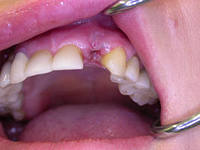 |
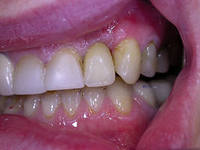 |
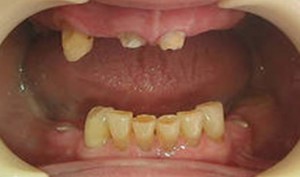 |
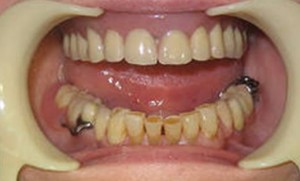 |
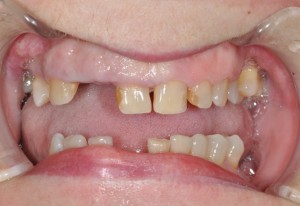 |
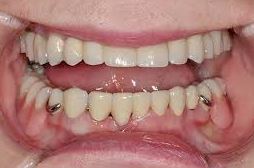 |